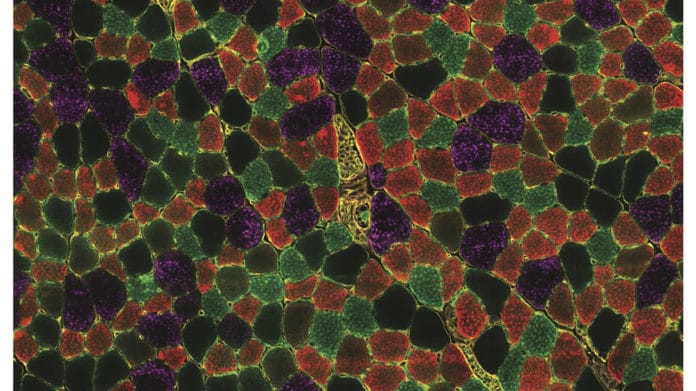Sphingolipids are found in animals, plants, fungi, and some prokaryotic organisms and viruses. It is a group of bioactive lipids thought to be involved in cell signaling, and, surprisingly, many of the symptoms present in Duchenne muscular dystrophy (DMD).
Duchenne muscular dystrophy (DMD) is the most common muscular dystrophy, caused by one of the thousands of identified mutations in the DMD gene encoding dystrophin. Mutations of dystrophin affect various biological pathways causing the hallmark symptoms of DMD: compromised cells membrane integrity, aberrant calcium homeostasis, chronic inflammation, fibrosis, and impaired tissue remodeling.
Scientists at EPFL‘s School of Life Sciences have made the first connection between muscular dystrophy and sphingolipids, a group of bioactive lipids. They found that mice with DMD show an accumulation of intermediates of sphingolipid biosynthesis.
This was already a hint that sphingolipid metabolism is abnormally increased regarding muscular dystrophy.
Scientists later used the compound myriocin to block one of the critical enzymes of the sphingolipid de novo synthesis pathway. They found that myriocin stabilized the turnover of muscular calcium and reversed fibrosis in the diaphragm and heart muscle.
At the same time, blocking the synthesis of sphingolipids also reduced DMD-related inflammation in the muscles by moving the immune macrophage cells off their pro-inflammatory state and pushing them towards an anti-inflammatory one.
Scientists noted, “Our study identifies inhibition of sphingolipid synthesis, targeting multiple pathogenetic pathways, simultaneously, as a strong candidate for the treatment of muscular dystrophies.”
Journal References:
- Pirkka-Pekka Laurila et al. Inhibition of sphingolipid de novo synthesis counteracts muscular dystrophy. Science Advances. 2022. DOI: 10.1126/sciadv.abh4423
- Martin Wohlwend, Pirkka-Pekka Laurila et al. The exercise-induced long noncoding RNA CYTOR promotes fast-twitch myogenesis in aging. Science Translational Medicine. 2021. DOI: 10.1126/scitranslmed.abc7367
